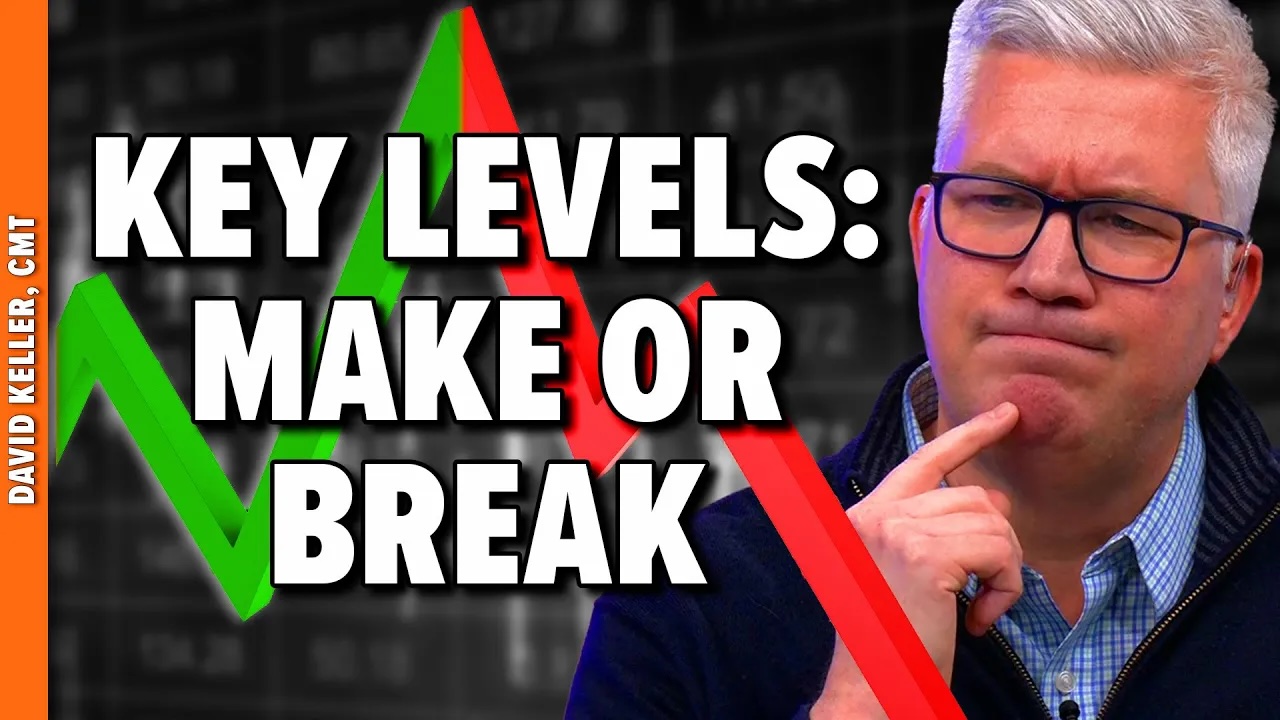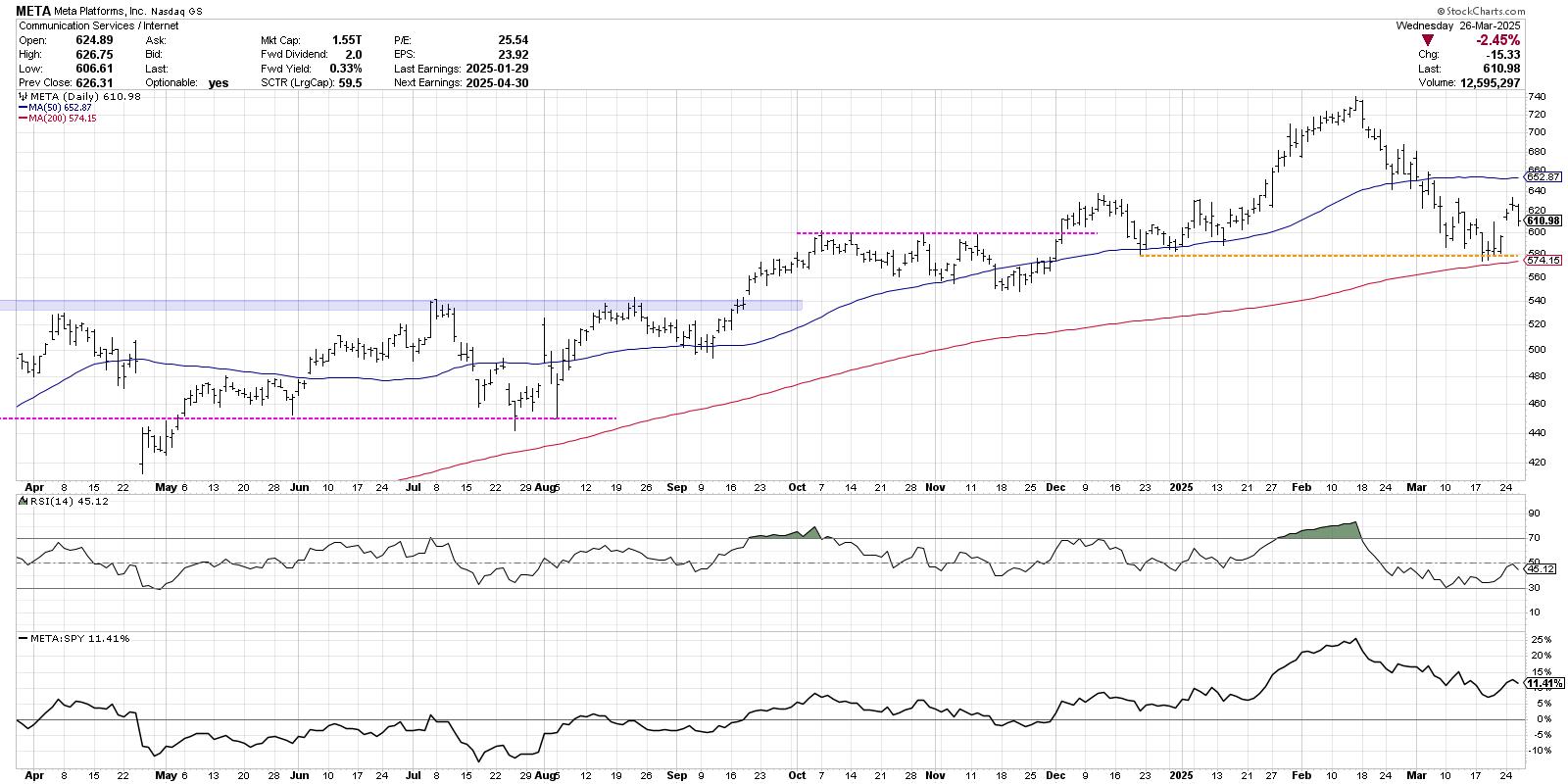 I remember following Martin Zweig years (decades) ago and in fact used one of the techniques he described in his book, “Winning on Wall Street,” in the mid-1980s' (1984 to be exact). In it he described a really simple technique using his unweighted index (ZUPI); trading it on a weekly basis whenever it moved four percent or more. If it moved up four percent in a week, he bought, if it moved down four percent in one week, he sold. Positions were held until the next opposing signal – just that simple. The problem I had back then was not only in not following it as he described, but in trying to tweak it into something better. Eventually experience told me that he had already been down that road and I was the beneficiary of the results. Anyway, I took this concept and used it on Index/ETF pairs, actually calculating the ratio of Index/ETF pairs and using the weekly movement of four percent to swap between the numerator and the denominator. It really works well with asset classes that are not correlated, such as equity versus fixed income or equity versus gold, etc. Chart A shows an example of this pair strategy using ETFs for the S&P 600 small cap index (IJR) versus the BarCap 7-10 Year Treasury index (IEF). The ratio line is the typical price line in the upper plot while the lower plot is the percent up and down moves for each weekly data point. Remember, this is a weekly chart. Whenever the ratio line moves up or down by 4% in a week as shown by the lower plot moving above or below the horizontal lines shown as +4% and -4%. Repeated moves in the same direction are ignored.
I remember following Martin Zweig years (decades) ago and in fact used one of the techniques he described in his book, “Winning on Wall Street,” in the mid-1980s' (1984 to be exact). In it he described a really simple technique using his unweighted index (ZUPI); trading it on a weekly basis whenever it moved four percent or more. If it moved up four percent in a week, he bought, if it moved down four percent in one week, he sold. Positions were held until the next opposing signal – just that simple. The problem I had back then was not only in not following it as he described, but in trying to tweak it into something better. Eventually experience told me that he had already been down that road and I was the beneficiary of the results. Anyway, I took this concept and used it on Index/ETF pairs, actually calculating the ratio of Index/ETF pairs and using the weekly movement of four percent to swap between the numerator and the denominator. It really works well with asset classes that are not correlated, such as equity versus fixed income or equity versus gold, etc. Chart A shows an example of this pair strategy using ETFs for the S&P 600 small cap index (IJR) versus the BarCap 7-10 Year Treasury index (IEF). The ratio line is the typical price line in the upper plot while the lower plot is the percent up and down moves for each weekly data point. Remember, this is a weekly chart. Whenever the ratio line moves up or down by 4% in a week as shown by the lower plot moving above or below the horizontal lines shown as +4% and -4%. Repeated moves in the same direction are ignored.
You can see that it appears to trade quite a bit; but remember it is weekly not daily. And 10 round turn trades in almost 5 years really isn’t much. Think of the ratio line like this: when it is moving upward it means the numerator (IJR) is outperforming the denominator (IEF). So, here is how it works! I had to start that way because it is confusing. When the Rate of Change (ROC) goes below the -4% line, it means the numerator (IJR) is no longer outperforming the denominator (IEF). Hence, you want to rotate into the denominator (IEF); or sell IJR and buy IEF. When the ROC goes above the +4% line it means the numerator is now outperforming the denominator, so you want to sell IEF and buy IJR. Also, the signals are at the crossing of the + and – 4% lines, not at the peaks and troughs of the ROC. Confused? Try explaining it; I went through 3-4 iterations. One last effort: Think of a buy signal (green arrows in Chart A) as buying the denominator (IEF) and selling the numerator (IJR). This is completely different than typical technical analysis indicators since you are trading a ratio instead of individual security.
Red Arrows - buy IJR and sell IEF
Green Arrows - buy IEF and sell IJR
TEST QUESTION (rhetorical): Why wasn’t there a buy signal near the first of October 2014?
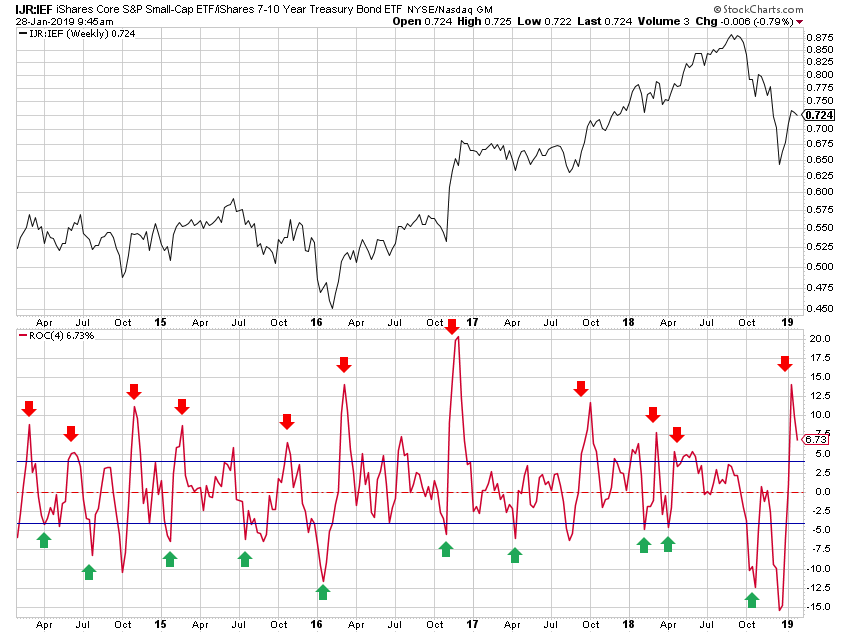 Chart A
Chart A
An astute reader just pointed out a foolish mistake on my part. Here is the correct Chart A below (Chart A-1) using ROC with parameter at 1 (not 4 like I had). I was so focused on the explanation I wasn’t paying attention. Look at the above Chart A to understand the process, then look at Chart A-1 to see the correct chart. Fewer signals. The data in the tables was created using the correct process. Only Chart A was incorrect. I figured this is better than just changing the original chart since so many have already viewed it. I’m going to take a nap. Sorry!
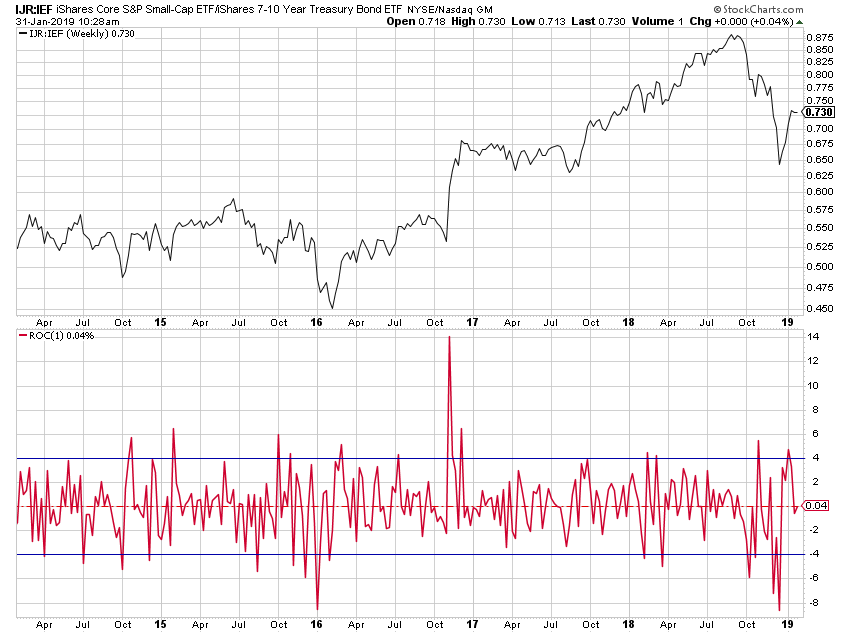 Chart A-1
Chart A-1
Using SharpCharts, you can do this ratio with a colon (:) between the symbols and the indicator "Rate of Change" with parameter set at 1.
The ratio significantly outperformed each of the individual components (IJR and IEF) and the S&P 500. Chart B shows the performance of the ratio with the numerator and denominator swapped whenever there was a move of 4% or greater, the performance of the individual components that make up the ratio, and the S&P 500.
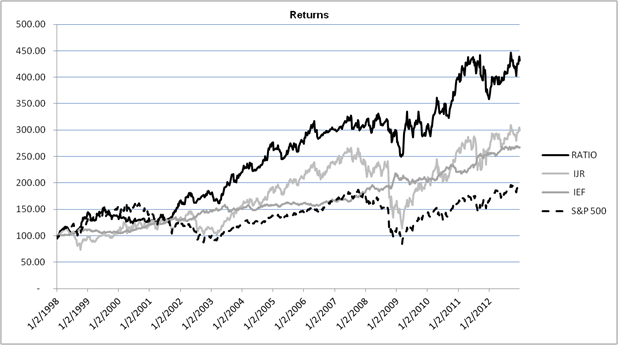 Chart B
Chart B
Table A shows the annualized performance statistics from 01/02/1998 until 12/28/2012 (weekly data). The Sharpe Ratio is slightly modified in that the return is used as the numerator without a reduction for risk free return. The Ratio rotation strategy outperformed in annualized return, and when compared to the equity component it reduced the Drawdown (DD) considerably, improved the Sharpe Ratio, and lowered the Ulcer Index.
 Table A
Table A
I also found that smoothing the ratio with just a 2-period simple moving average greatly enhanced the performance because it reduced the number of trades. Chart A at the top of this article was without the 2-period smoothing; it might have reduced the number of trades. Trying different percentages other than Zweig’s four percent worked well occasionally, but overall, the four percent on weekly data yielded the most robust results time and time again. The real advantage for a pair rotation strategy is when it is used as a core holding situation. In other words, if a strategy required a core holding percentage but that core could be actively managed, this would give an actively managed core holding that would have much lower drawdowns that a buy and hold core, and considerably better returns. I’ll expand on this concept with a Core Rotation Strategy in the next article.
TEST QUESTION Answer: Repeat signals in the same direction are ignored.
My long-time friend and superb trader, Linda Bradford Raschke has finally written a book about her life in trading. Folks, this is a great read that will offer so many tidbits of knowledge on trading you won’t be able to put it down. I was honored to read the draft and make comments. It won’t be on Amazon for a year, but you can order it HERE.
Dance with the Trend,
Greg Morris




